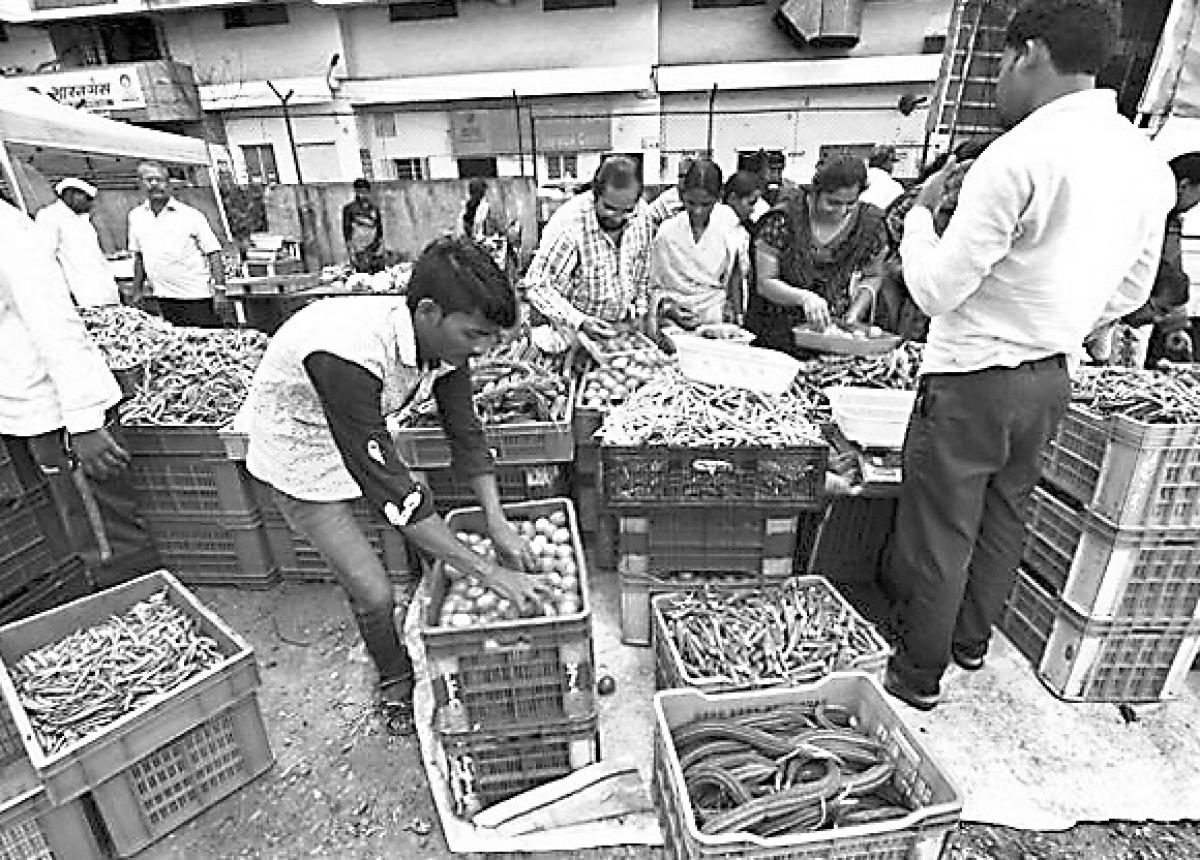Live
- Our 6 free services in Delhi pinching rivals: Kejriwal at 'Revadi par Charcha' campaign
- Abu Dhabi T10: Jos Buttler shines in debut, lauds England batters after memorable performances
- BCCI releases dates for IPL 2025 to 2027
- Centre releases Rs 448 crore as grant for rural local bodies in Karnataka
- India and Japan bolster defence ties, explore air domain cooperation
- Masik Shivratri 2024: Date, Time, Rituals, and Significance
- 8 of 10 Indian stockbrokers to increase IT budgets for emerging tech adoption
- Utpanna Ekadashi 2024: Date, Rituals, and Significance
- New Criminal Laws: An Era of Transformation of the Criminal Justice System
- India among top 10 countries with AI readiness: Report
Just In

NAM (National Agriculture Market): It is a win-win solution for all the stakeholders in Supply Chain.It is a concept of “one nation and one market”/a concept- “agriculture development tree”. SERVING FARMERS AND SAVING FARMING through the e-market platform and it is said to be a Jai Kisan programme or initiative.
The Twelfth Five Year Plan (2012-13 to 2016-17) had envisaged a growth target of 4 per cent for agriculture and allied sectors, necessary for the Indian economy to grow at over 8 per cent.
NAM (National Agriculture Market): It is a win-win solution for all the stakeholders in Supply Chain.It is a concept of “one nation and one market”/a concept- “agriculture development tree”. SERVING FARMERS AND SAVING FARMING through the e-market platform and it is said to be a Jai Kisan programme or initiative.
National Agriculture Market (NAM) is a pan-India electronic trading portal which networks the existing APMC mandis to create a unified national market for agricultural commodities.
It is a single window service for all APMC related information and services for farmer-friendly service. This includes commodity arrivals & prices, buy & sell trade offers, provision to respond to trade offers, among other services.
While material flow (agriculture produce) continue to happen through mandis, an online market reduces transaction costs and information asymmetry.
Agriculture marketing is administered by the States as per their agri-marketing regulations, under which, the State is divided into several market areas, each of which is administered by a separate Agricultural Produce Marketing Committee (APMC) which imposes its own marketing regulation (including fees).
This fragmentation of markets, even within the State, hinders free flow of agri commodities from one market area to another and multiple handling of agri-produce and multiple levels of mandi charges ends up escalating the prices for the consumers without commensurate benefit to the farmer.
NAM addresses these challenges by creating a unified market through online trading platform, both, at State and National level and promotes uniformity, streamlining of procedures across the integrated markets, removes information asymmetry between buyers and sellers and promotes real time price discovery, based on actual demand and supply, promotes transparency in auction process, and access to a nationwide market for the farmer, with prices commensurate with quality of his produce and online payment and availability of better quality produce and at more reasonable prices to the consumer.Objectives of NAM
A national e-market platform for transparent sale transactions and price discovery initially in regulated markets. Willing States to accordingly enact suitable provisions in their APMC Act for promotion of e-trading by their State Agricultural Marketing Board/APMC.
Liberal licensing of traders / buyers and commission agents by State authorities without any pre-condition of physical presence or possession of shop /premises in the market yard.
One license for a trader valid across all markets in the State. Harmonisation of quality standards of agricultural produce and provision for assaying (quality testing) infrastructure in every market to enable informed bidding by buyers. Common tradable parameters have so far been developed for Agricultural commodities.
Single point levy of market fees, i.e on the first wholesale purchase from the farmer. Provision of Soil Testing Laboratories in/ or near the selected mandi to facilitate visiting farmers to access this facility in the mandi itself. STAKEHOLDERS Farmers NAM promises more options for selling produce and making competitive returns. Traders NAM will provide access to larger national market for secondary trading.
Buyers, Processers & Exporters NAM will enable direct participation in the local mandi trade, reducing intermediation cost. As of Sep 2016, 365 APMC of 11 States and 1 UT of Chandigarh has been integrated in NAM e-Platform. As of March 2018, there will be 585 regulated mandis functioning across numerous states and UT in India. Price Policy for Agricultural Produce
The government decides on the support prices/ MSP (Minimum Support price) for various agricultural commodities taking into account the recommendations of CACP (Commission for Agricultural Costs and Prices), the views of state governments and Ministries/Departments concerned and other relevant factors. There has been steady increase in the MSP of crops over the years since 2011-12.(The writer is Director of Sadguru IAS Academy)

© 2024 Hyderabad Media House Limited/The Hans India. All rights reserved. Powered by hocalwire.com







